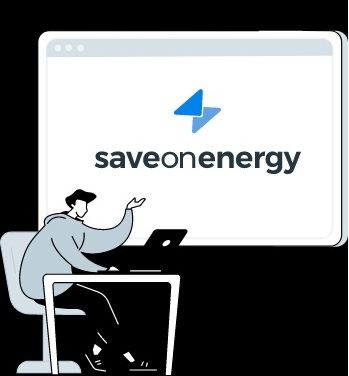
Everything you need to save on energy by SaveOnEnergy.com
SaveOnEnergy.com® commissioned a YouGov survey of 655 American adult homeowners to gauge their understanding of solar panel costs and incentive programs.
Nearly half (45%) of the homeowners overestimate or have no idea about the average cost of solar panels for a single-family home. According to the Center for Sustainable Energy, theaverage cost for a residential solar system ranges from $15,000 to $25,000 before any incentives. Only a fifth (20%) of homeowners were able to correctly estimate the cost before incentives, while 43% underestimate that the average cost of solar was less than $15,000, 12% overestimate the cost to be $30,000 or more and 24% are clueless about the pre-incentive costs.
Solar energy is quickly becoming a more popular, reliable, and affordable power source for residents and businesses. By powering your home with solar energy, you can lower your environmental footprint and save substantially on electricity bills.
California is considering a proposal to end incentives to residents who install solar panels on their rooftops. The state’s Public Utilities Commission (PUC) intends to do away with solar panel subsidies and charge a monthly fee for rooftop solar connections. The proposal calls for a $600 million fund to support California solar energy programs for low-income households. Read More
On March 1, 2023, Elon Musk and other executives presented Master Plan 3 during Tesla Investor Day at the Gigafactory in Texas. Musk released a five-part action plan toward a fully sustainable Earth that requires renewable electrification, less mining, and more recycling of materials.
A 100% renewable energy-powered Earth may seem unattainable, but a study from the Institute for Energy Research provides a helpful analysis supporting Tesla’s plan. The study explains that with great financial investments and large-scale battery storage, it may be possible over time. Researchers emphasize the need for backup storage and cost-effectiveness, but the size and scope of batteries is not defined. Tesla’s plan aligns with the study, making similar statements about the need for backup storage with utility-scale batteries. Read More
How much do solar batteries cost?
Depending on the battery size and type, the price of a solar storage system can range between $6,100 and more than $16,000. Your average daily electricity consumption and the battery type can determine the solar battery capacity your home will need. Most grid-connected residential solar panels work well with lithium-ion batteries. While lithium-ion batteries can cost upwards of $16,000 with installation, you can get some of the best solar batteries for $6,100 plus installation.
Lead-acid batteries typically have smaller capacities than lithium-ion options, so they tend to be cheaper. You can find lead-acid batteries for around $300. However, they are more suitable for RVs and will not have enough capacity to power your home. Read More
What is a solar inverter?
A solar inverter is the piece of a solar system that converts solar energy into electricity that powers your home. Solar panels collect direct current (DC) electricity from the sun, but most homes run on alternating current (AC) electricity.
This is why solar inverters are so important. In order to power your home, the solar inverter quickly switches the direction of DC electricity, converting it into AC electricity. Without an inverter, your home would not be able to use the electricity collected by your solar panels.
Solar inverter technology has rapidly advanced in recent years. The best solar inverters offer a range of benefits for a home solar system and vary in cost, size, and efficiency. This guide will walk you through what you need to know when it comes to how solar inverters work.
How does a solar inverter work?
A solar inverter works by converting direct current (DC) electricity to alternating current (AC) electricity. DC electricity keeps a constant voltage in the same direction, which is why it is named “direct current.” AC electricity, on the other hand, flows both directions in a circuit because the voltage alternates between positive and negative. Solar inverters work by switching DC electricity back and forth at a rapid pace until the DC input switches to an AC output. Read More
Find out everything you want to know about solar energy
Solar energy 101
Shop solar panels for home
Cost of solar panels
Solar energy glossary
Arcadia community solar
Solar buying guide
Information Source: Read More “
Energy Monitors , Electric Power , Natural Gas , Oil , Climate , Renewable , Wind , Transition , LPG , Solar , Electric , Biomass , Sustainability , Oil Price , Electric Vehicles,


